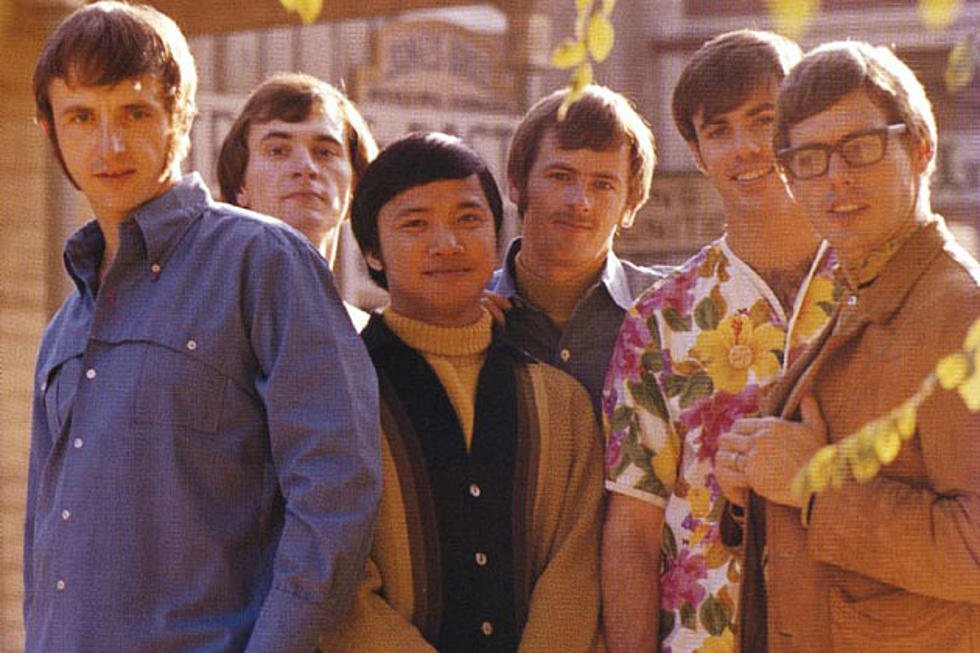Along Comes Larry
/Larry Ramos during his heyday
Perhaps it was inevitable that he made his entertainment debut at the precocious age of seven on the “Arthur Godfrey and Friends” television show, strumming his ukulele along with Godfrey playing his own uke. Young Larry was also a dancer and an actor. At age five he and his older sister won a statewide dancing contest. In 1947, he was cast in the film “Pagan Love Song” starring aquatic star Esther Williams. And at age 13, he acted in the national tour of the Rodgers and Hammerstein musical “The King and I,” playing the crown prince of Thailand opposite the king, Yul Brynner.
When Larry was older, he mastered the banjo and guitar in addition to the ukulele, which together with his singing, led to opportunities in folk music. First, with the New Christy Minstrels and then with The Association. His television debut with the Minstrels’ audition for the “Andy Williams Show” almost did not happen. The CBS-TV producers questioned the wisdom of featuring a group with a non-white performer. After several agonizing weeks, the producers relented. It was the first but not the last racist incident Larry would encounter as a performer.
Larry Ramos and The Association
Guy Aoki, President of Media Action Network for Asian Americans recalled, “Ramos was subjected to racial barbs…and he had to confront suspicious whites when the group toured the South. He helped this country get used to someone who wasn’t white or Black but Asian with a brown face.” The New Christy Minstrels’ debut album won a Grammy in 1963.
While Larry spent four productive years with the Minstrels, he experienced his greatest fame with The Association. He sang co-leads on “Windy” in 1967 and on “Never My Love” in 1969. Both songs earned Grammy Gold awards. He also rendered memorable performances on megahits “Cherish” and “Along Comes Mary.” According to the 1999 BMI poll,* “Never My Love” was the second-most played and performed song on TV and radio in the poll’s history — ahead of the Beatles’ “Yesterday” and just behind the Righteous Brothers’ “You’ve Lost That Lovin’ Feeling.” While with The Association, Larry won six Golds and four Platinum awards. In recognition of his many contributions to The Association’s success, he was chosen as the group’s leader in 1984.
Health issues ultimately led to Larry’s retirement as a performer. In 2011, he suffered a heart attack. In 2013, he was diagnosed with metastatic melanoma, a skin cancer. Knowing he didn’t have long to live, he wanted to do two more shows. The first was in his native Hawaii where he attracted scores of relatives, friends, and fans. The second show was scheduled in his adopted home of Grangeville, Idaho — the home town of Helene, his wife of 50 years, and where he had resided since 1995. However, he was so weakened by the time of the Idaho event, it was canceled. He died in Clarkston, Washington on April 30, 2014 at age 72.
Larry Ramos in his later years
*https://www.bmi.com/news/entry/19991214_bmi_announces_top_100_songs_of_the_century
Reposted with permission from the author’s blog, peterjamero.net
Peter Jamero was born in Oakdale, California in 1930 and raised on a Filipino farm worker camp in Livingston , California. Recipient of a master’s of social work degree from UCLA, he is a trailblazer having achieved many “Filipino American Firsts” in his professional career. He is the author of Growing Up Brown: Memoirs of a Filipino American and Vanishing Filipino Americans: The Bridge Generation. Retired, he lives in Atwater, California.
More articles from Peter Jamero






